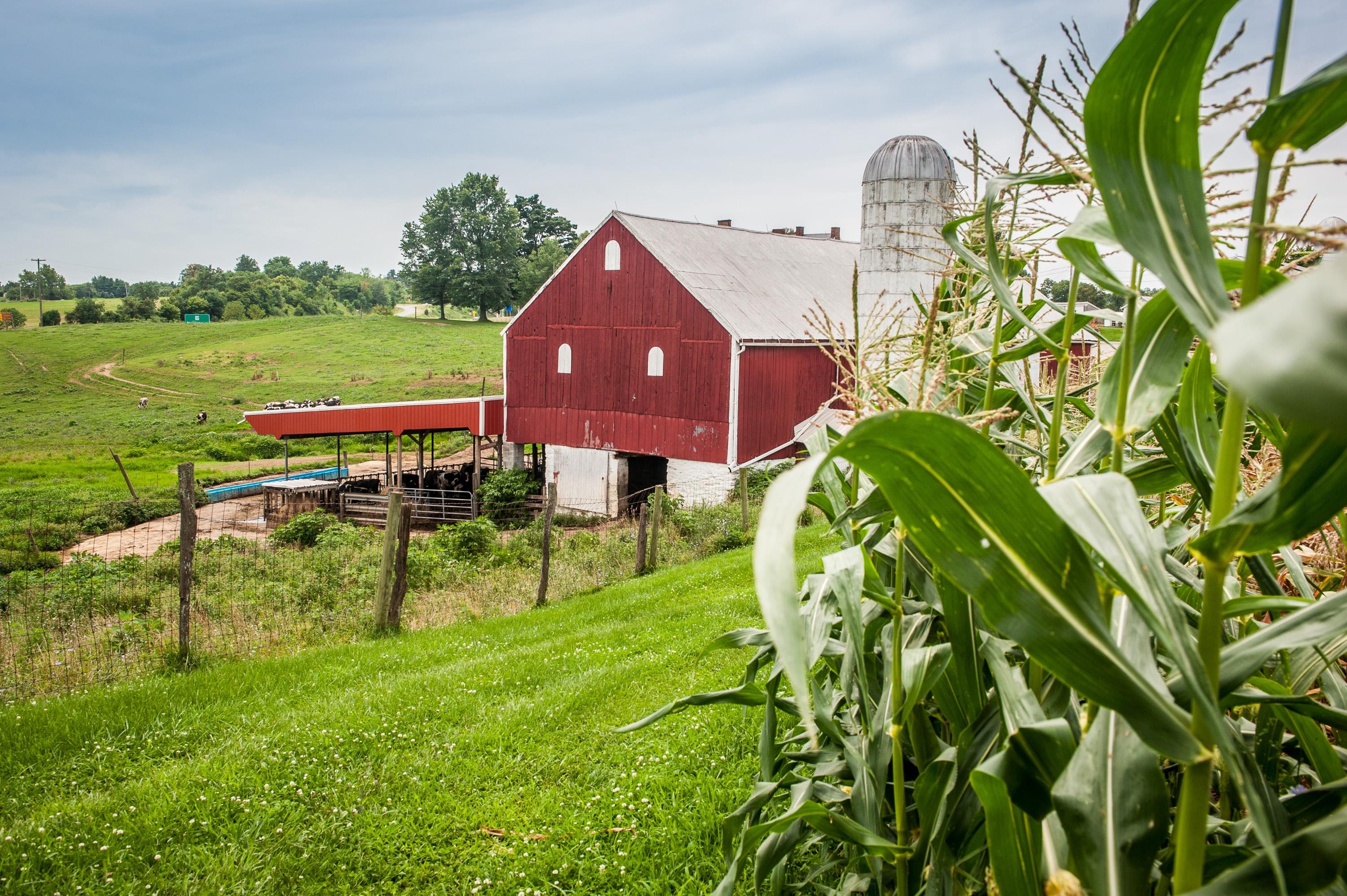Updated: June 13, 2024
No-Till Spring Vegetables After Forage Radish Cover Crop (FS-1134)
A late August seeding of forage radish (Raphanus sativus L.) can eliminate the need for tillage before many early spring vegetable crops like spinach, beets, peas, onions, and even carrots under certain soil conditions in Maryland. In addition to reducing soil disturbance, not having to till prior to spring planting reduces labor requirements at a critical point in the season and may allow earlier planting. Forage radish, which winterkills when temperatures drop to 17-20°F, suppresses early spring weeds, allows soil to dry out and warm up, and provides an increased supply of N, S, P and other nutrients to crops in early spring. Because of the minimal amount of residue after forage radish, conventional planting equipment can effectively seed directly into the winterkilled cover crop without tillage. For early transplanted crops like onions, rows of radish can create holes into which transplants can be dropped. Experiment station results in Maryland and farmer trials throughout the mid-Atlantic and northeast have shown that this system requires a closed cover crop canopy in fall and may be ineffective in poorly structured, heavy soils. Authors: Natalie Lounsbury and Ray Weil; Title: No-Till Spring Vegetables After Forage Radish Cover Crop (FS-1134).
Updated: May 23, 2024
University of Maryland Extension Resources for Horse Owners (EBR-51)
Maryland’s horse industry adds $2.9 billion to the state’s economy, according to the American Horse Council 2024 economic impact study. Maryland is home to over 94,000 horses and ranks number one in the United States in terms of horses per square mile. University of Maryland Extension (UME) is a non-formal education system within the College of Agriculture and Natural Resources (AGNR) that has educators who can help guide and provide resources for Maryland’s horse enthusiasts. There are a variety of equine-related programs, online recordings, webinars, and publications that are offered through UME either for free or for a small fee to the public. Authors: Erica Crowl and Jennifer Reynolds; Title: University of Maryland Extension Resources for Horse Owners (EBR-51).
Updated: May 7, 2024
Is Starter Phosphorus Fertilizer Necessary for Corn Grown on Atlantic Coastal Plain Soils? (FS-1160)
Despite reports of phosphorus (P) deficiencies in corn grown on soils with high P concentrations in Maryland, the scientific literature does not consistently demonstrate a yield increase with the use of starter P fertilizer. In this study, we evaluated corn yields with and without starter P application on soils across a wide range of soil P concentrations in Maryland to determine if our local conditions are consistent with the literature. Author: Nicole M. Fiorellino; Title: Is Starter Phosphorus Fertilizer Necessary for Corn Grown on Atlantic Coastal Plain Soils? (FS-1160).
Updated: April 15, 2024
Introduction to Growing Cover Crops in the Mid-Atlantic (FS-2023-0692)
Cover crops are crops planted for a primary purpose other than harvest. They are often grown during the time when the primary or harvested crop is not growing. Cover crops can be grown for a variety of agronomic and environmental purposes. However, the effect of cover crops on subsequent cash crops and the environment will vary depending on how intentionally and effectively they are managed to achieve those purposes. Cover crop species and mixtures, timing and growth window, termination, and the effect of cover crops on subsequent crops should all be considered when planning and implementing cover crop systems. Author: Sarah M. Hirsh; Title: Introduction to Growing Cover Crops in the Mid-Atlantic (FS-2023-0692).
Updated: June 24, 2022
Precision Soil Sampling Helps Farmers Target Nutrient Application (FS-1046)
Precision agriculture allows modern producers to manage within fields rather than managing the whole field.¹‚² By integrating global positioning systems (GPS), variable rate (VR) application equipment, and geographic information systems (GIS), farmers are allowed increased efficiency. However, prior to using VR equipment, accurate maps of yield-limiting factors must be created.³,⁴,⁵5 Nutrients in any field vary due to topography, soil properties and past management (manure application patterns, crop history, etc.). To account for this variability, farmers will need more than one soil sample in each field (Figure 1a). A more intensive sampling scheme must be performed, through either grid or zone sampling. Looking to the future, on-the-go sensors, whether attached to tractors or unmanned aerial vehicles, may also increase accuracy and decrease the cost of soil sampling. Authors: Jarrod O. Miller and Craig W. Yohn; Title: Precision Soil Sampling Helps Farmers Target Nutrient Application (FS-1046)
Updated: May 11, 2022
Soil Sampling for Optimizing Agricultural Production in Maryland (FS-1184)
Soil samples provide information about the soil fertility status of a field, which is used to generate nutrient and lime recommendations and develop a farm's nutrient management plan. This factsheet outlines proper soil sampling techniques (how, when, why) to optimize crop production, minimize environmental degradation, and maximize farm profitability. Authors: Brian Kalmbach and Dr. Gurpal Toor; Title: Soil Sampling for Optimizing Agricultural Production in Maryland (FS-1184)


